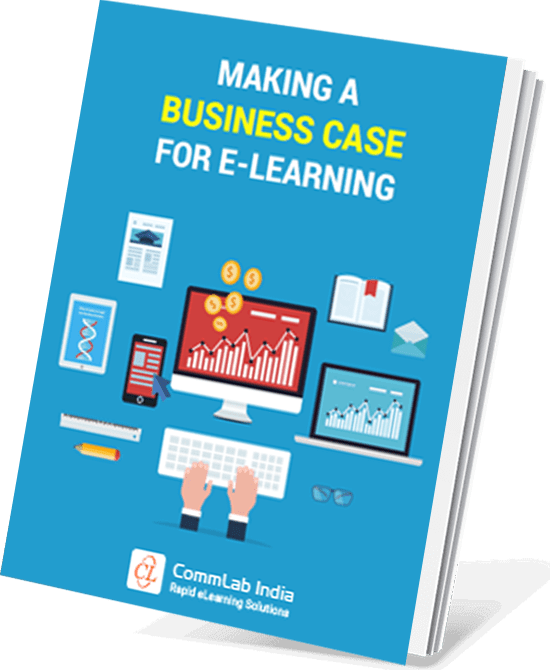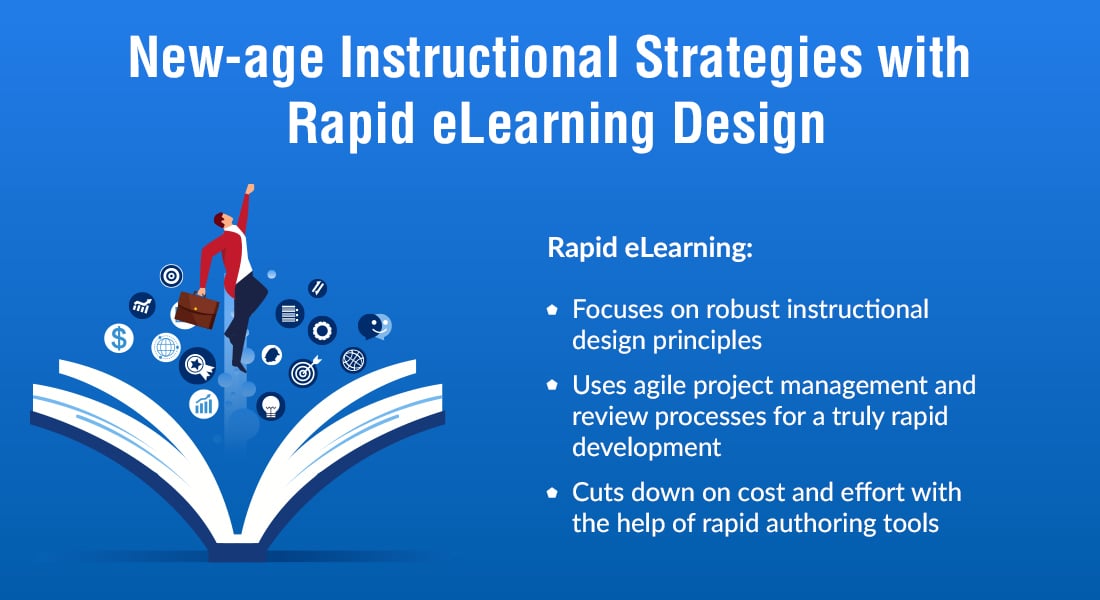5 Common eLearning Design and Development Mistakes to Avoid

Have you ever dreamt of creating an eLearning program so engaging and effective, it transforms the way your team learns? Imagine a training experience that boasts sky-high completion rates, boosts knowledge retention, and delivers a phenomenal training ROI (Return on Investment).
Sounds pretty fantastic, right? But the road to eLearning success isn't always smooth. Just like any development project, there are potential pitfalls that can derail your eLearning journey and leave you feeling more frustrated than fulfilled.
So, how do you navigate the eLearning design and development landscape and avoid these common mistakes? Buckle up, because we're diving into the top 5 dangers to watch out for...
→ Download eBook: Making a Business Case for eLearning
Table of Content
5 eLearning Design and Development Mistakes to Avoid
Is Your Organization eLearning Ready? Ask Yourself These Questions:
- Is your existing content aligned with learning objectives, well-organized, and adaptable for the eLearning format?
- Do learners have reliable internet access, basic computer skills, and familiarity with common terminology?
- Are key decision-makers informed, involved, and supportive of the eLearning initiative?
- What is your learners’ prior knowledge, level of tech-savviness, and preferred learning style?
- Do your SMEs have the necessary infrastructure, time resources, and comfort level to contribute effectively?
Mistake #1: Ignoring Content Readiness
Content is the heart and soul of your eLearning program. Think of it as the delicious filling in a learning sandwich (because nobody wants dry bread, right?). But before you start constructing fancy eLearning modules, take a step back and assess your content readiness.
Here are some key questions to ask yourself:
- Alignment with Objectives: Does your existing content directly address the learning objectives you want your eLearning program to achieve?
- Organization & Clarity: Is your content well-organized with a clear learning flow and defined objectives?
- Content Updates: How often will you need to update the content to maintain accuracy and relevance?
- Customization Needs: Will your content require any customization for the eLearning format?

The Fix: By taking a content inventory and addressing these questions upfront, you can save yourself a world of headaches down the line. This allows you to identify any gaps or inconsistencies, streamline the development process, and ensure your eLearning program delivers the most up-to-date information.
Mistake #2: Underestimating Technology Readiness
eLearning is all about leveraging technology to facilitate learning. However, it's crucial to consider your learners' technological capabilities. Imagine creating a cutting-edge eLearning module that relies on advanced interactive features, but your learners struggle with basic navigation tools. Not exactly a recipe for success!
Here are some technological factors to consider:
- Internet Connectivity: Do your learners have reliable internet access to complete the online training?
- Computer Skills: Are they comfortable using computers and navigating online platforms?
- Terminology Familiarity: Can they understand basic computer terminology used within the eLearning program?
The Fix: Conduct a technology readiness assessment of your target audience. If you identify skill gaps, consider incorporating short introductory modules that equip learners with the necessary technological foundation. Alternatively, explore alternative delivery methods like downloadable modules for learners with limited internet access.
Mistake #3: Neglecting Stakeholder Readiness
Your eLearning program won't exist in a vacuum. It's crucial to secure buy-in and support from key stakeholders, including managers, executives, and anyone else who will be impacted by the training initiative.
The Fix: Don't just inform stakeholders about the eLearning program – involve them! Solicit their feedback, address any concerns, and keep them updated on the development process. This collaborative approach fosters a sense of ownership and increases the likelihood of successful program adoption.

Making a Business Case for eLearning
The eBook Explores:
- Applications of eLearning
- Organizational readiness
- Cost parameters
- Implementation strategies
Mistake #4: Overlooking Learner Readiness
Let's be honest, learners are the true stars of the eLearning show. Their readiness and motivation are critical factors in determining the program's effectiveness.
The Fix: Before diving headfirst into development, consider your learners' baseline knowledge, technological skills, and learning preferences.
- Prior Knowledge: What existing knowledge do they bring to the table?
- Tech Savvy: How comfortable are they with technology-based learning?
- Learning Preferences: Do they learn best through visual aids, interactive activities, or more traditional text-based instruction?

The Fix: By understanding your learners' needs, you can tailor the eLearning program accordingly. This might involve incorporating different learning styles, providing additional resources for beginners, or offering alternative pathways for learners with varying levels of expertise.
Mistake #5: Skipping SME Readiness
Subject matter experts (SMEs) are your secret weapons in eLearning development. Their deep understanding of the subject matter is essential for creating accurate, informative, and engaging training content. But even the most knowledgeable SME might not be ready to translate their expertise into the eLearning format.
The Fix: Assess your SME's readiness across various aspects:
- Infrastructure & Technology: Do they have access to the necessary technology and tools to collaborate on eLearning development?
- Human Resources: Will they have the dedicated time and resources to contribute to the project.
- Information Security: Are they comfortable sharing sensitive information within the eLearning context?
- Management Commitment: Do they have buy-in and support from management to dedicate time to the eLearning project?
- Resistance to Change: How comfortable are they with adapting their knowledge to a new delivery format?
By openly discussing these factors with your SME, you can address any concerns and ensure their smooth integration into the eLearning development process.
Tips to Get SME Buy-In for eLearning Design and Development: A Comprehensive Guide [Video]
Wrapping Up
Avoiding these common pitfalls will set you on the path to eLearning success. Remember, a well-designed and developed eLearning program can deliver a multitude of benefits, including:
- Improved Training ROI: eLearning can offer significant cost savings compared to traditional classroom training.
- Enhanced Scalability: eLearning programs can be easily scaled to accommodate large numbers of learners across various locations.
- Increased Accessibility: Learners can access eLearning modules at their own pace and convenience, fostering a more flexible learning environment.
- Elevated Engagement: Modern eLearning tools can incorporate interactive elements, multimedia content, and gamification strategies to keep learners engaged and motivated.
Ready to Champion the Power of eLearning?
Creating a compelling business case for eLearning is essential to securing the resources and support you need. Our comprehensive eBook, "Making a Business Case for eLearning", provides valuable insights and strategies to help you demonstrate the ROI potential of your eLearning initiatives. Download your free copy today and take the first step towards transforming your training programs!





